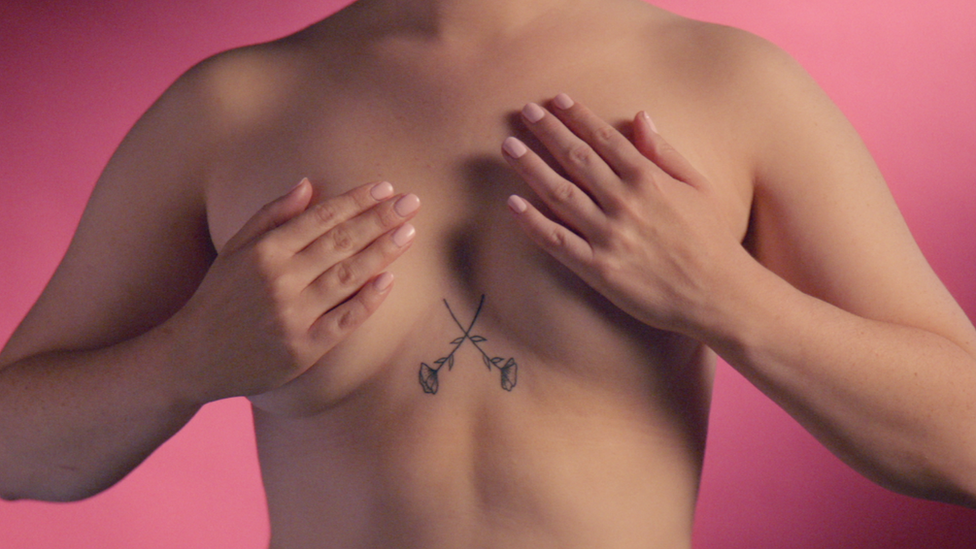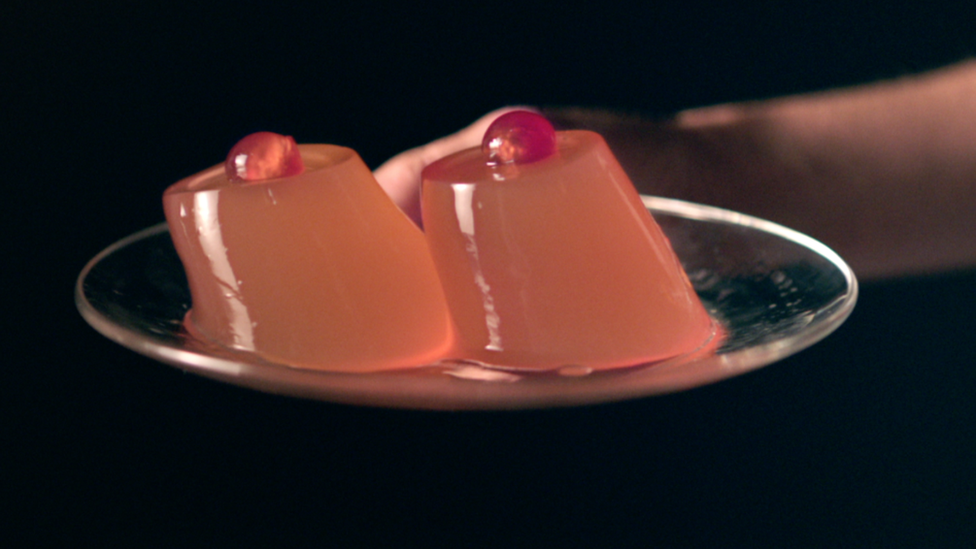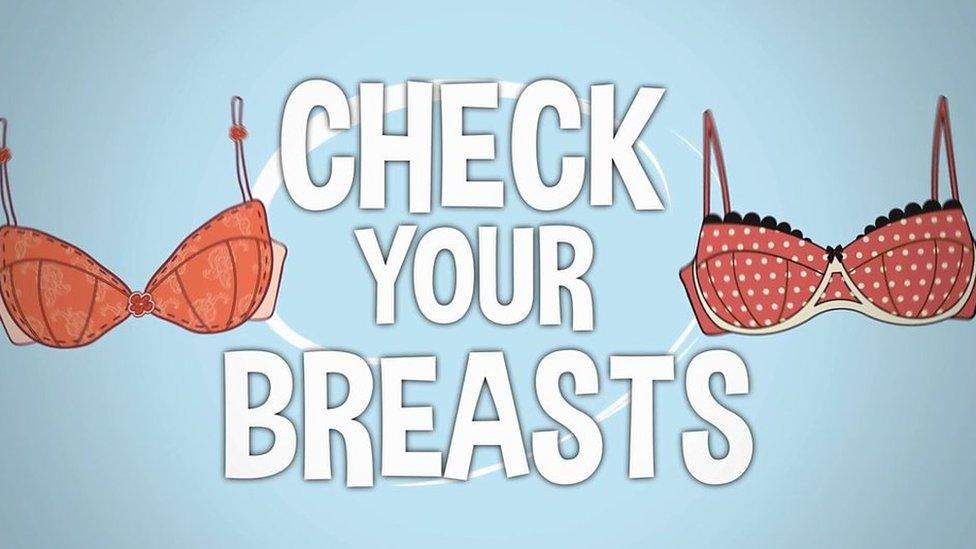'First female nipple' broadcast in daytime TV advert for breast cancer
- Published

The CoppaFeel! advert encourages people to check themselves for signs of breast cancer
The first advertisement to appear on UK daytime television with a female nipple fully visible has been broadcast, with the full advert being shown on Monday.
Created for the CoppaFeel! charity, it is being shown during Breast Cancer Awareness Month.
It was broadcast on Good Morning Britain on Friday, during a discussion about the disease with the BBC's Victoria Derbyshire.
Breast cancer is the most common cancer in the UK, with one person diagnosed every 10 minutes, with almost all of them women.

TV stars AJ Odudu and Olivia Buckland feature in the advert
The advert encourages people to examine their own breasts to check for signs of irregularities, which could be symptoms of cancer.
It shows inanimate objects being touched, as well as men and women touching their own chest and nipples.
Love Island reality TV star Olivia Buckland, television presenter AJ Odudu, blogger Anna Newton, and vlogger Lily Pebbles all feature.
Scheduled to run on TV and in cinemas, in 60 and 40-second versions respectively, it will not be shown in or around children's programmes.

It also shows inanimate objects, encouraging viewers to explore them by touch
Natalie Kelly, CEO of CoppaFeel!, said: "In demonstrating the power of our hands and celebrating our touch as the best tool for checking, we hope to encourage more young people across the UK to adopt a healthy boob-checking habit, which could one day save their life."
One in eight women in the UK will develop breast cancer in their lifetime.
Some 5,000 people will be diagnosed during Breast Cancer Awareness Month.
Survival rates for the disease are improving, and have doubled in the last 40 years in the UK.
Almost nine in 10 women survive breast cancer for five years or more, while every year about 11,400 people die from breast cancer in the UK.

Breast cancer symptoms and signs
A BBC News animation shows how you should check your breasts
See your GP if you notice:
A new lump or area of thickened tissue in either breast that was not there before
A change in the size or shape of one or both breasts
Bloodstained discharge from either of your nipples
A lump or swelling in either of your armpits
Dimpling on the skin of your breasts
A rash on or around your nipple
A change in the appearance of your nipple, such as becoming sunken into your breast
Source: NHS Choices

- Published12 October 2017

- Published8 October 2017

- Published6 October 2017

- Published3 April 2017
